SPEQ: "Super Passive Equalizer"
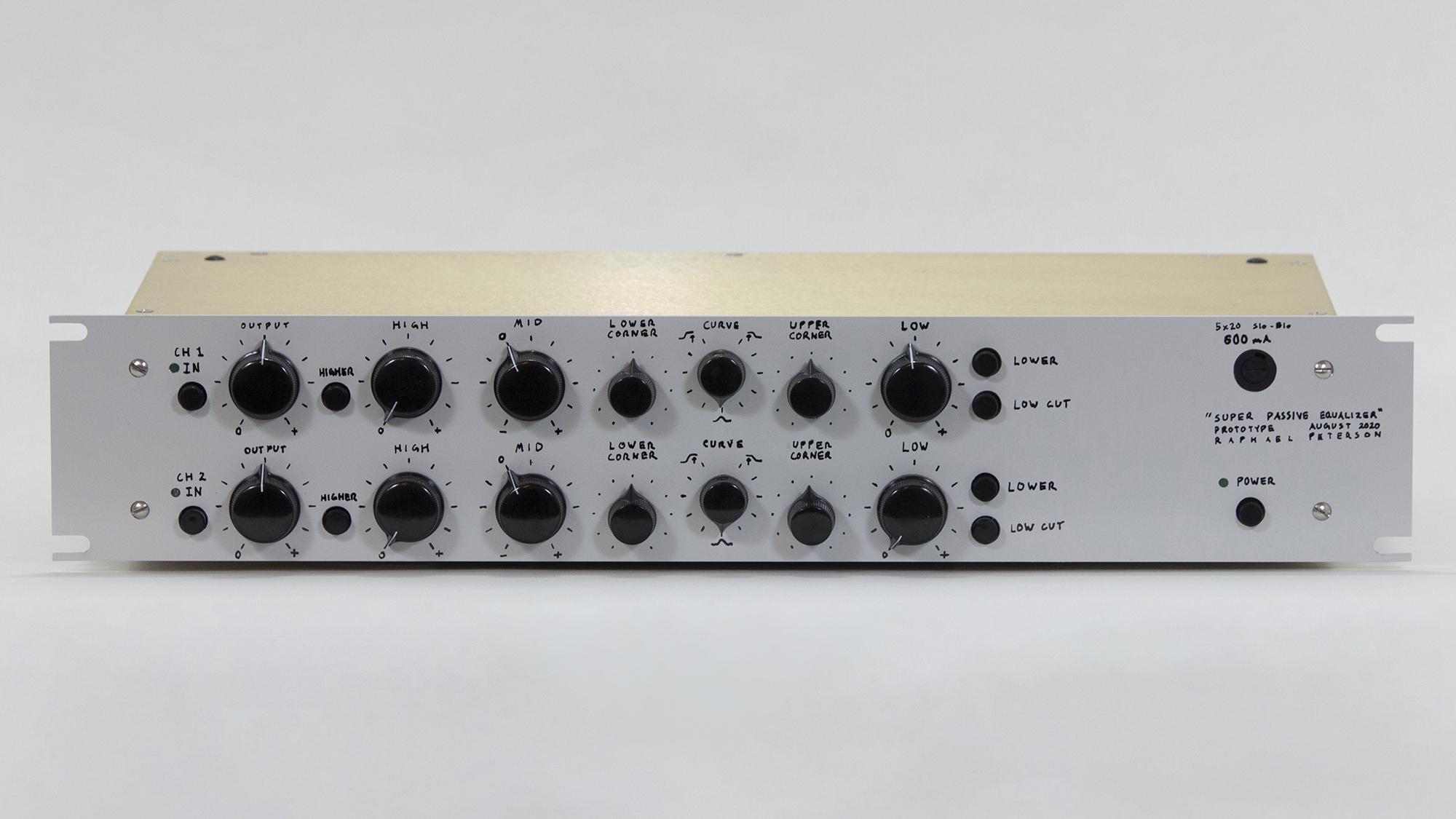
Hello, and Welcome!
The Super Passive Equalizer is a dual-mono 3-band passive vacuum tube equalizer. It is unique amongst other passive equalizers in that it has an extremely flexible midrange control while retaining overall simplicity in use and a compact form factor. The mid band covers the range from 260hz to 10khz with a large variety of curves and bandwidths, and is interactive with the high and low controls, allowing for even greater variety.
The passive topology puts it in good sonic company alongside Pultec, Helios, EMI, and various earlier tone controls. It does similar things to those equalizers, and it does them well - it excels at broad-stroke tonal moves, but can get narrow enough with the mid band to do creative and specific harmonic emphasis and filtering.
This is a high-end, hand-made unit, and I am am exploring making a short run of them to sell. This page exists to assess interest and provide information about the design. If you are interested in demoing or purchasing one, please get in touch via email at raphael r peterson [at] gmail [dot] com.
There are currently three of these in existence.
Video Demonstration
*You can navigate this video using the table of contents in the control bar.
How It Works
The Super Passive Equalizer (SPEQ) is a 3-band passive equalizer. It filters the signal through a network of frequency-specific resistors, capacitors, and inductors. This, in addition to a step-down input transformer, drops the level about 20db, so it is paired with a high-impedance amplifier to make up the loss in level.
The Midrange control is the heart of the unit. It is a bell curve that boosts and cuts in a range from 265hz to 12khz. Rather than selecting Frequency and Q as is typical of most analog eqs, the user selects the upper and lower corner frequencies of the bell. In practice, this feels similar to adjusting high- and low-pass filters. The result is that the user is able to hit just about any frequency across the whole midrange with a variety of Qs. As the center frequency of the curve is the mid-point between the two selected frequencies, the equalizer discourages the user from shooting for a specific number of hertz.
In addition, the midrange has a bell/shelf pan control, allowing you to blend the curve continuously from low shelf to bell to high shelf.
The Treble and Bass controls are electronically similar to the Pultec EQP1A, but with different and considerably fewer options:
The Treble control is a boost-only high-frequency bell curve that is so wide it functions more like a shelf. It has two frequency options - high and higher. The peak of the bell in the "higher" position is just above 20khz.
The Bass control is a boost-only shelf curve with two frequency options - low and lower. It also has a cut switch that enables you to do the boost-while-cutting "pultec" bass trick.
The Amplifier is a high-impdance dual triode line amplifier that runs over-spec'd vacuum tubes with no feedback. It is designed to be clean but not over-engineered.
Description of Controls

① Bypass Indicator - When lit, the channel is IN
② Bypass Switch - Balanced relay bypass. Routes the signal directly from input to output jack.
③ Output - Volume control for the makeup amplifier. Unity gain at 3 o'clock when eq is set flat.
④ Higher - Switches frequency of the High boost. Out = 12khz, In = 20khz
⑤ High - Boosts up to 18db at selected treble frequency. Flat when counterclockwise
⑥ Mid - Boosts clockwise, up to 18db, varying with Q. Cuts counterclockwise. Flat at 11 o'clock
⑦ Lower Corner - Selects the lower corner frequency of the Mid Bell
⑧ Curve - Counterclockwise = Low shelf, Centered = Bell, Clockwise = High Shelf
This knob is inverted. When all the way up or down, it points in the direction of the frequency switch that will move the shelf.
⑨ Upper Corner - Selects the upper corner frequency of the Mid Bell
Notes on the Midrange frequency selectors ⑦ and ⑨:
- When set to the same position they produce a bell curve with a Q of 0.6
- Higher Q values are obtained by switching the two switches "past" each other
- Lower Q values are obtained by switching the two switches "wider" than each other
- Center frequency is the midpoint between the two switch selections
⑩ Low - Boosts up to 18db at selected frequency. Flat when counterclockwise
⑪ Lower - Switches frequency of the Low boost. Out = 80hz, In = 40hz
⑫ Low Cut - 3db low shelf cut starting around 1khz.
Curves
Midrange
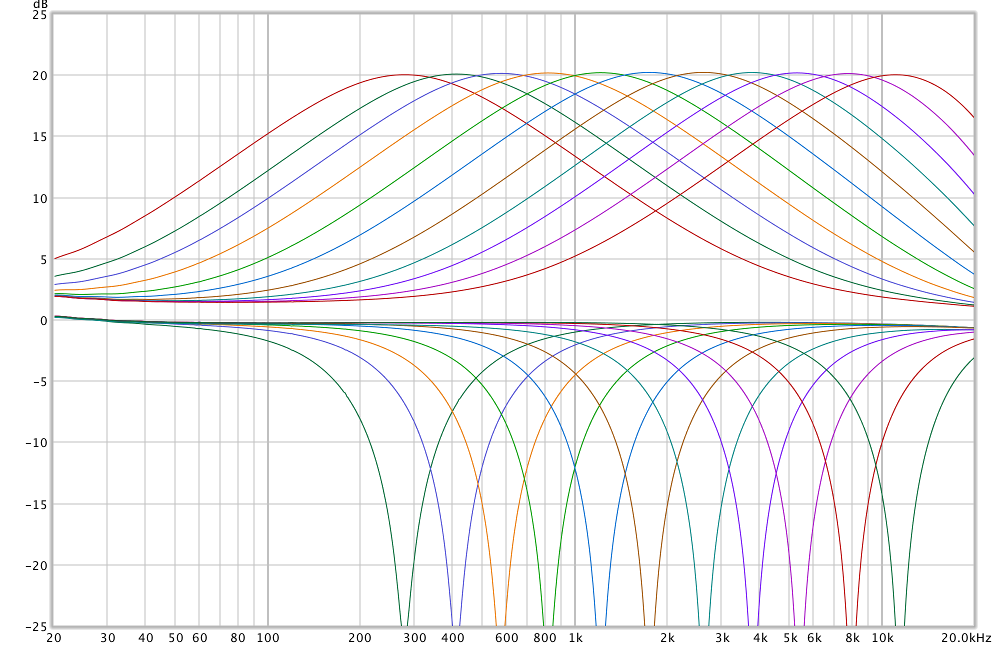
This plot shows the curves obtained when both upper and lower corner frequency switches are pointed in the same position. The result is a set of evenly-spaced curves with a Q of 0.6.
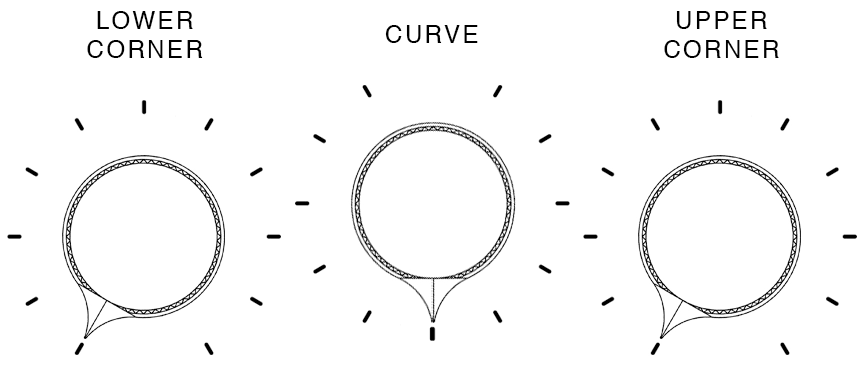
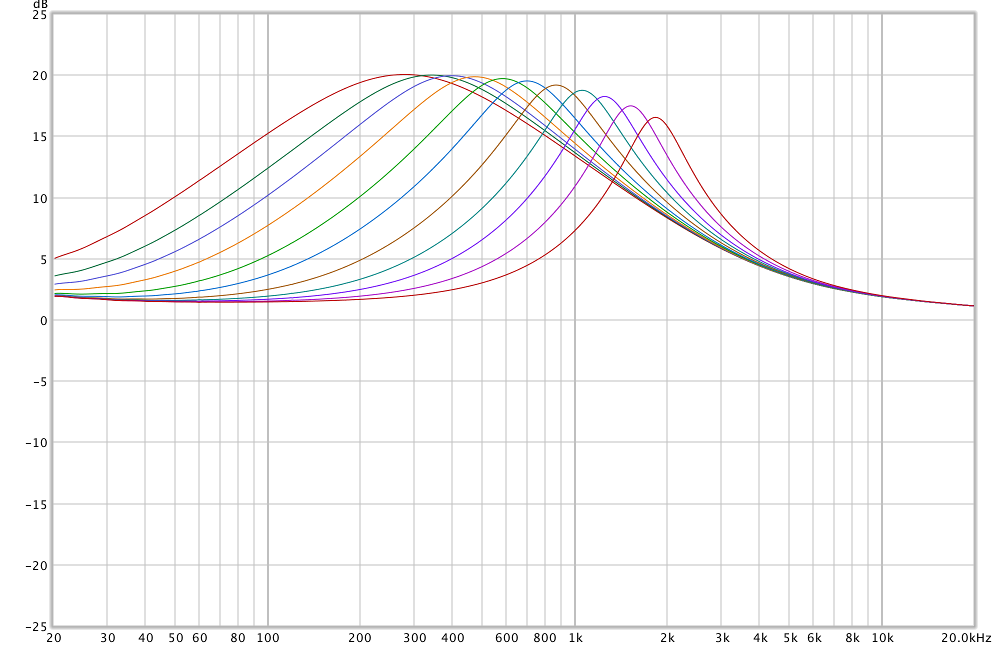
Upper corner switch fixed at lowest postion, Lower corner switch sweep. This represents the set of highest-possible Q curves below 2khz.
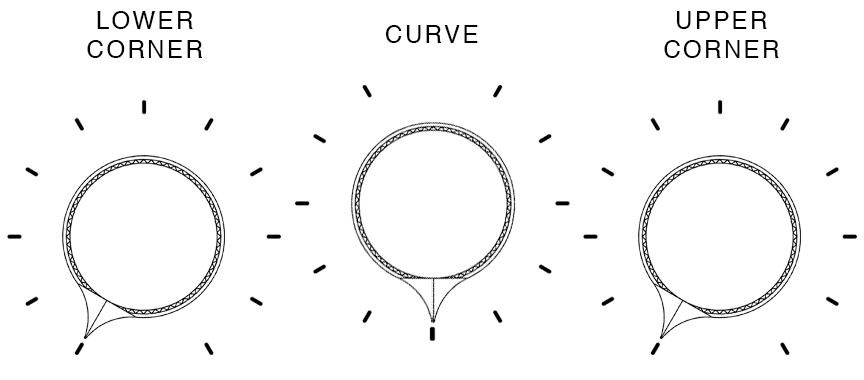
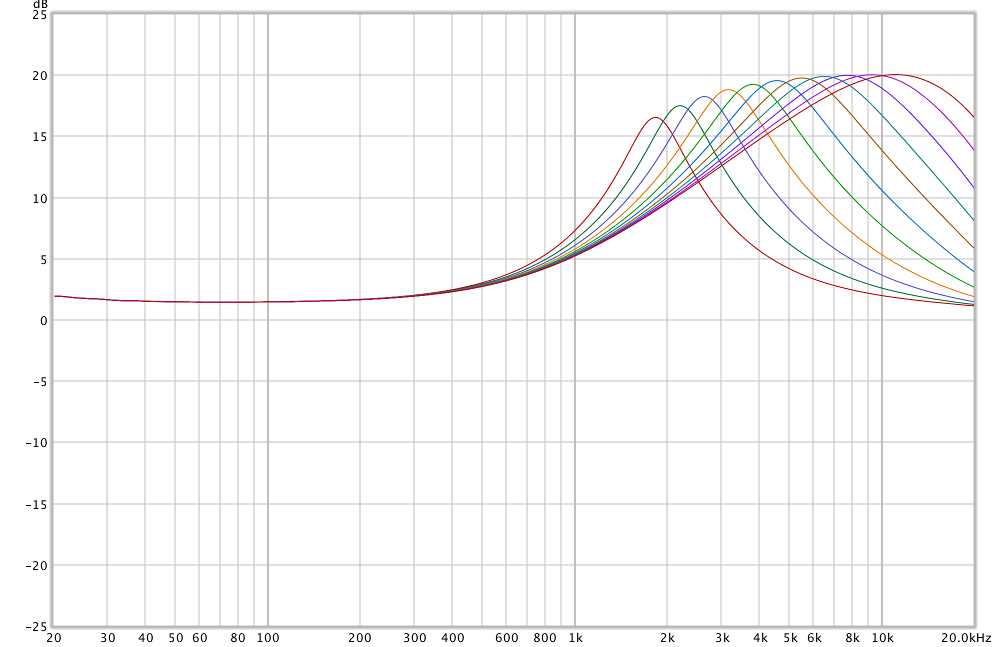
Lower corner switch fixed at highest postion, Upper corner switch sweep. This represents the set of highest-possible Q curves above 2khz.
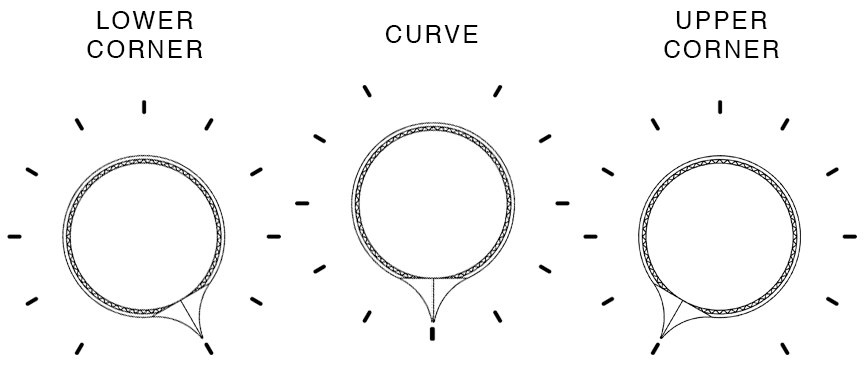
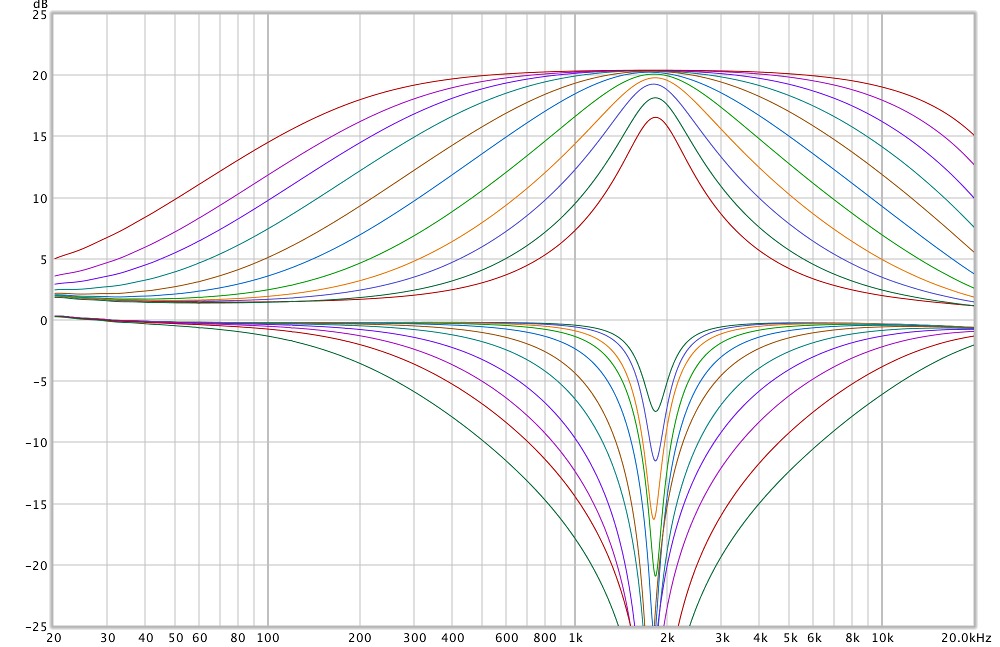
Moving the frequency selection switches in opposite directions results in remaining at the same frequency but changing the bandwidth. This plot shows starting with the lower corner all the way down and the upper corner all the way up (the widest possible bandwidth) and moving the knobs in opposite directions. When the controls are turned "past" each other, the Q becomes sharper.
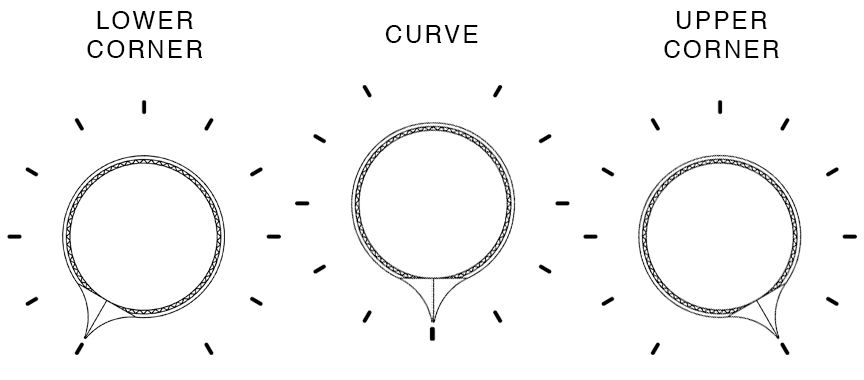
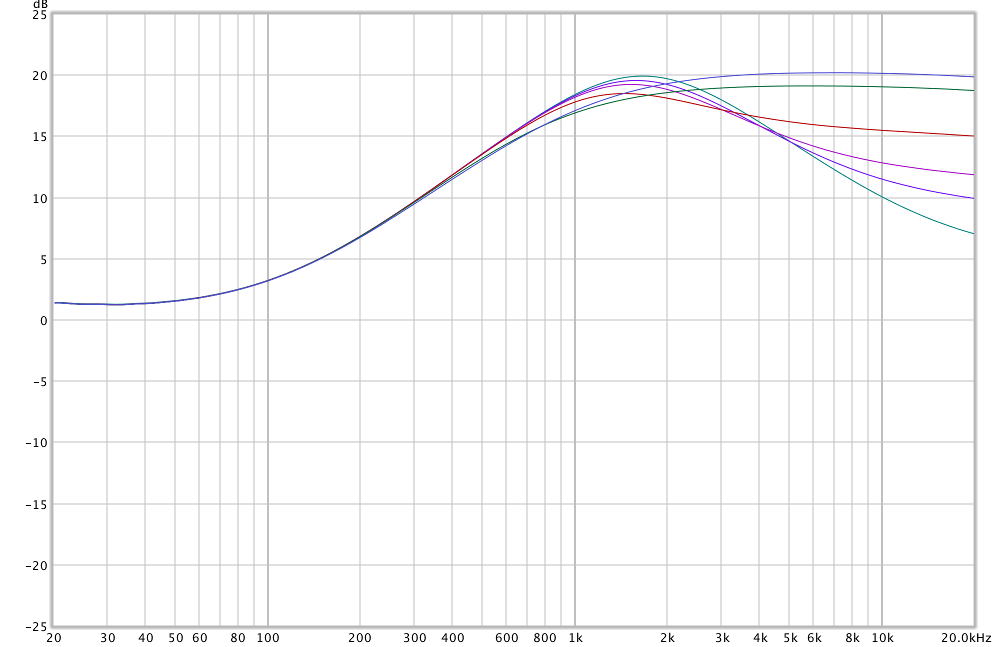
Using the Curve knob to blend from a bell to high shelf curve.
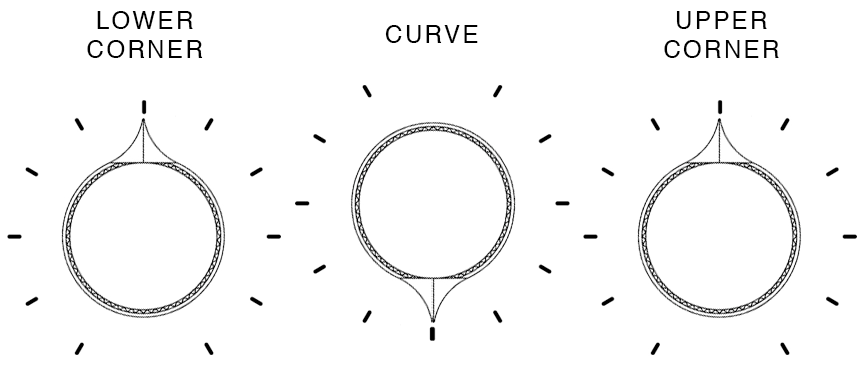
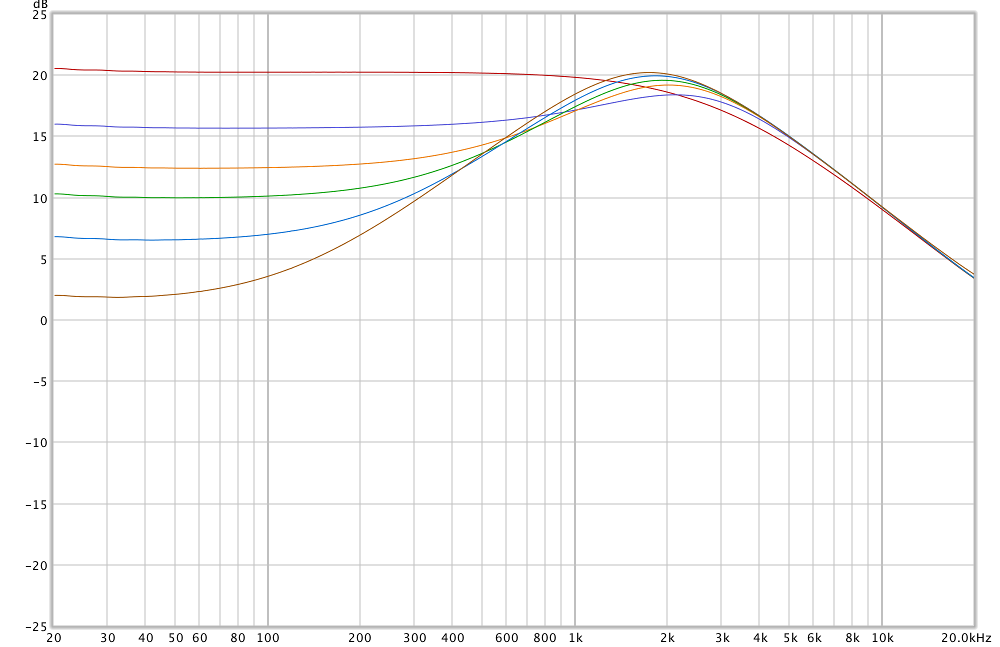
Using the Curve knob to blend from a bell to low shelf curve.
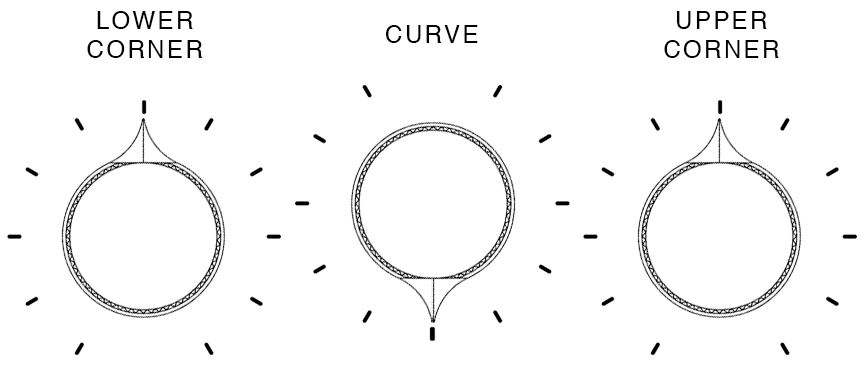
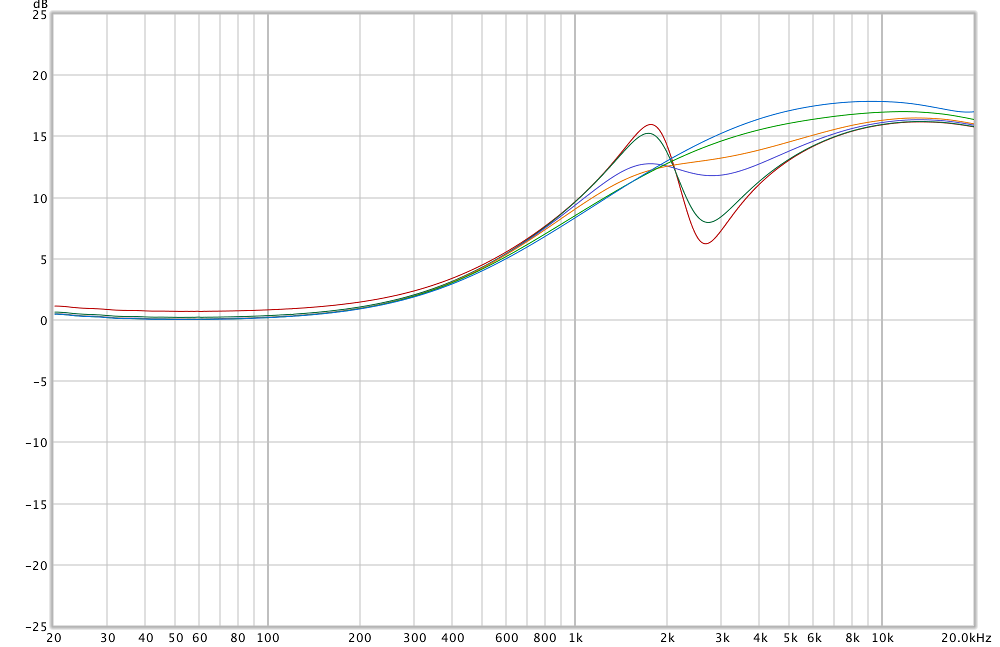
Using the Curve knob to compensate for band interactions resulting from boosting mid and high at the same time. Boosting both creates a null between the two bands. You can use the Curve control to cancel that null, at the expense of the sharpness of the mid bell.
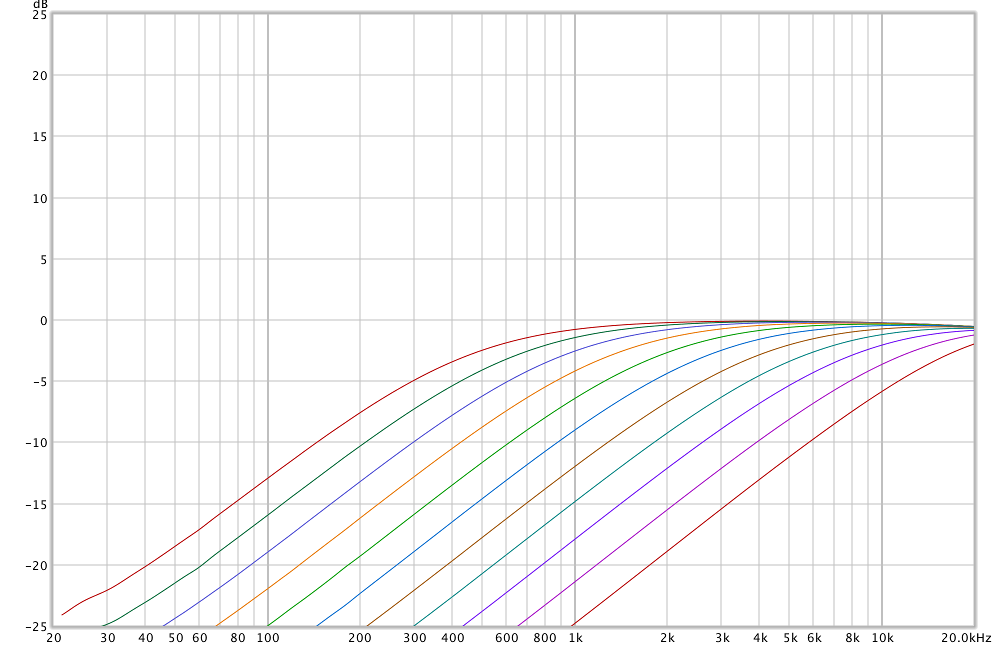
Using the Mid control as a high pass filter. Curve control all the way counterclockwise, Mid control all the way counterclockwise.
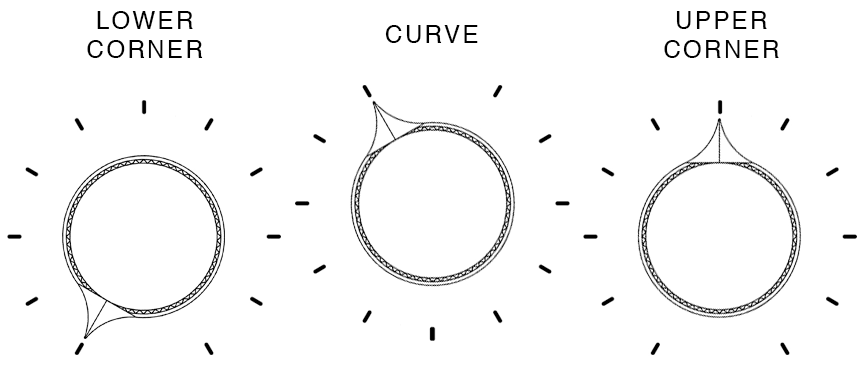
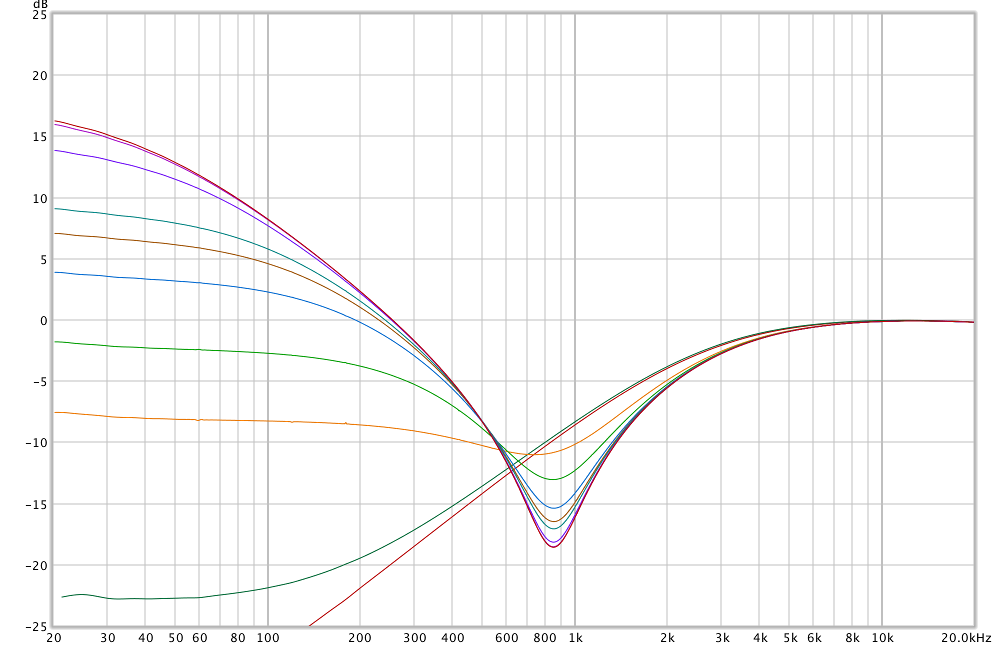
Using the mid control has a high pass, while simultaneously boosting the bass, which is selected here to the "lower" frequency. The result is an extreme version of the "pultec trick".
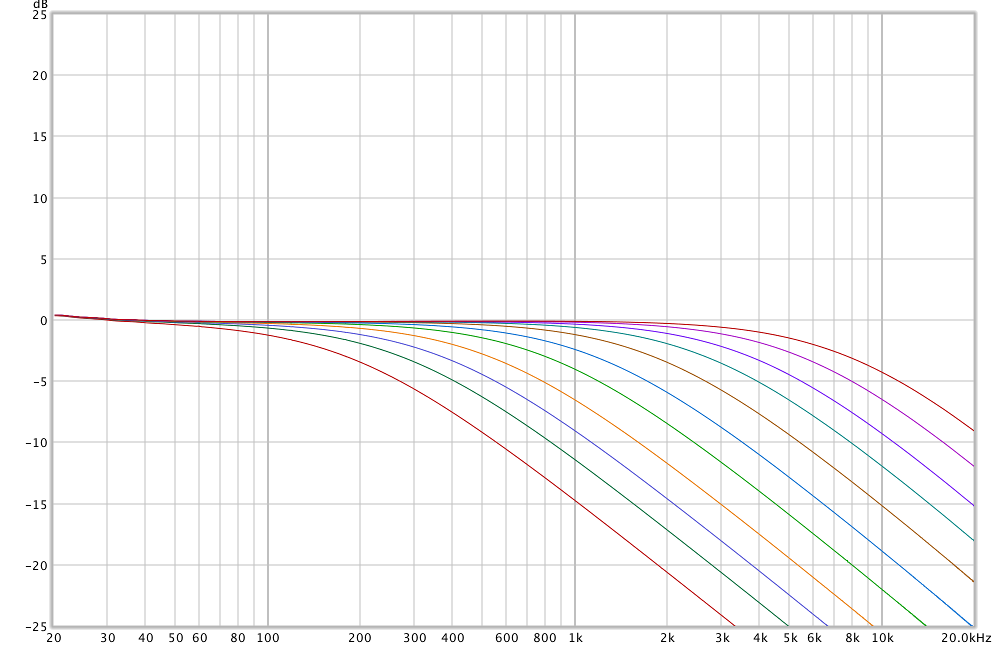
Using the Mid control as a low pass. Curve control all the way clockwise, Mid control all the way counterclockwise.
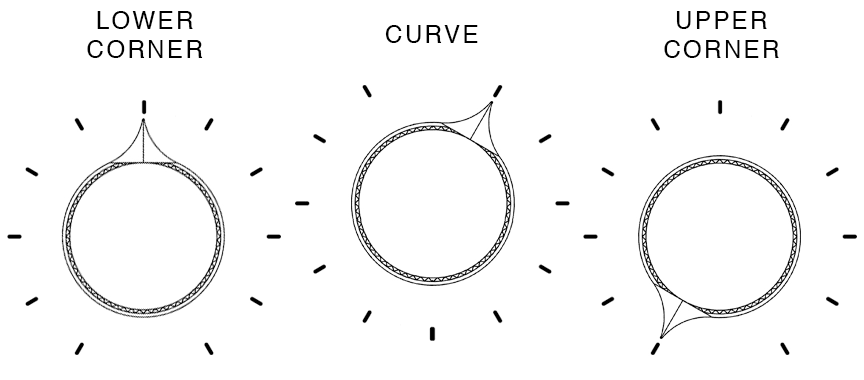
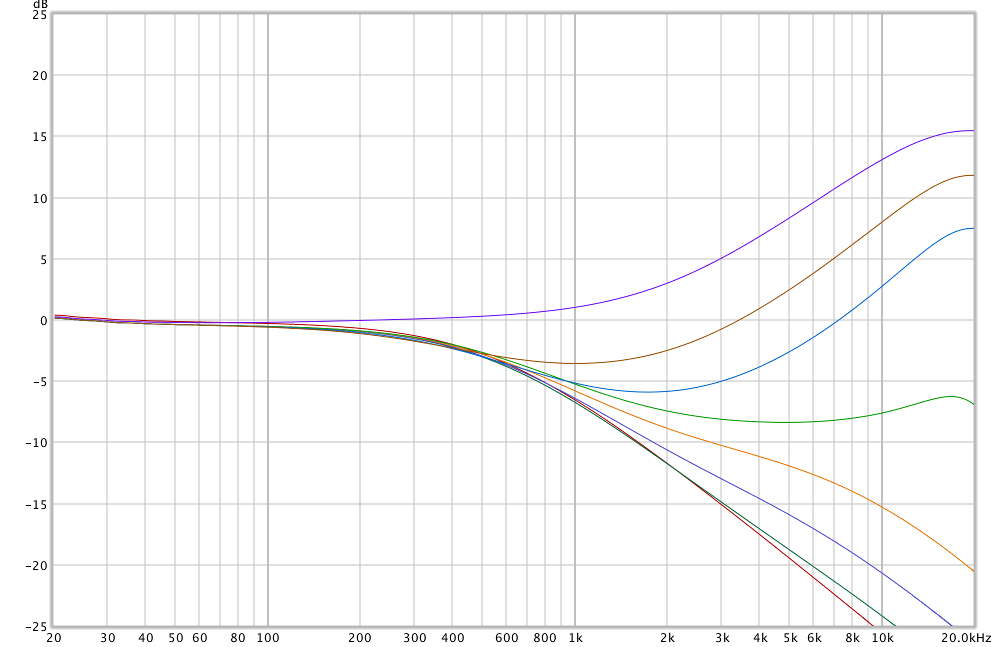
Using the mid control has a low pass, while simultaneously boosting the Treble, which is selected here to the "Higher" frequency. The "pultec trick" as applied to the treble end of the spectrum.
High
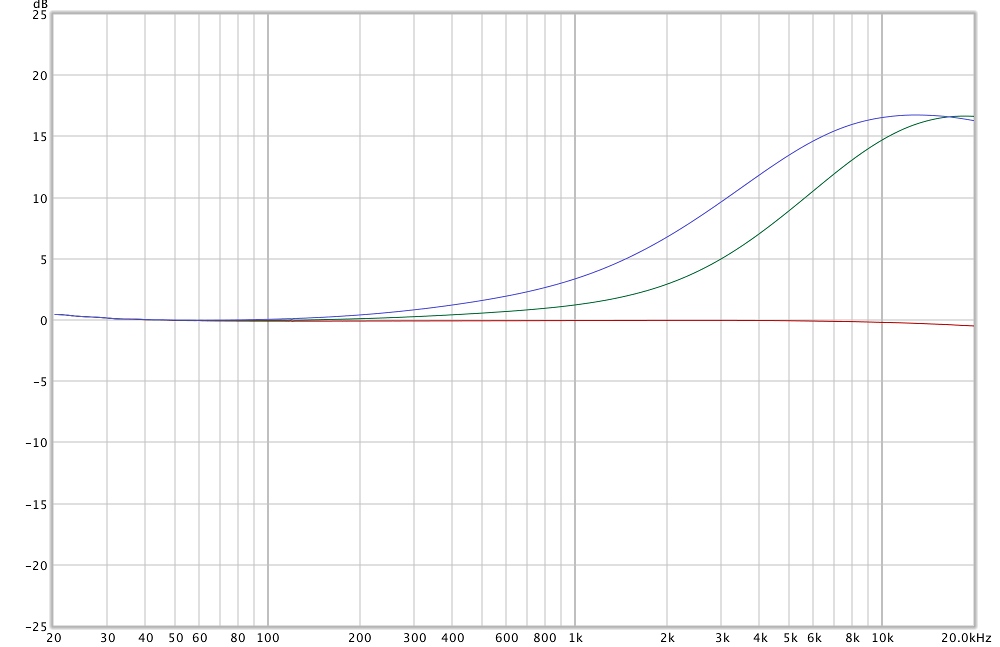
The High control operates boost-only. It is a very wide bell curve with two frequency options. The peaks are at 12khz and 20khz. When you switch to the higher frequency option, the steepness of the curve increases.
Low
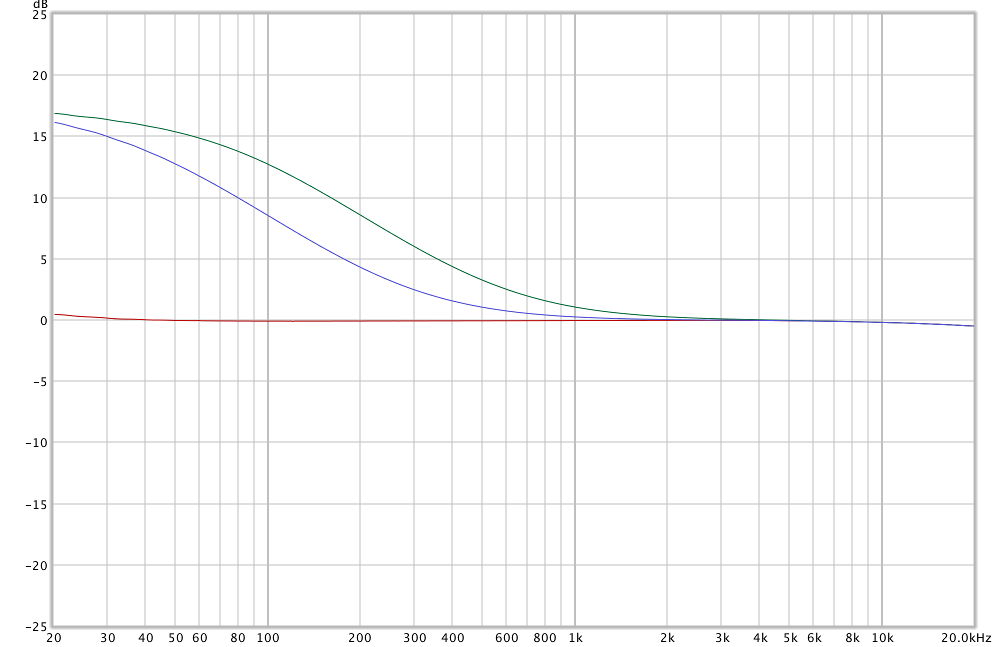
The Bass control operates boost-only. It has two frequency options: Low and Lower. The perceived frequency centers are 80hz and 40hz respectively.
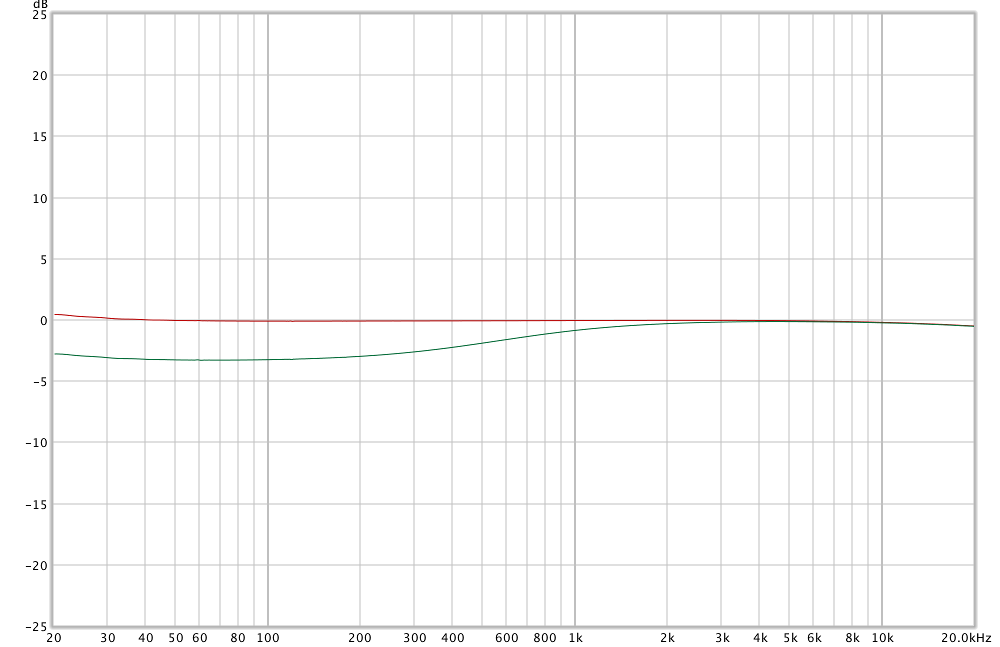
The Low Cut switch gently dips -3db starting around 1k.
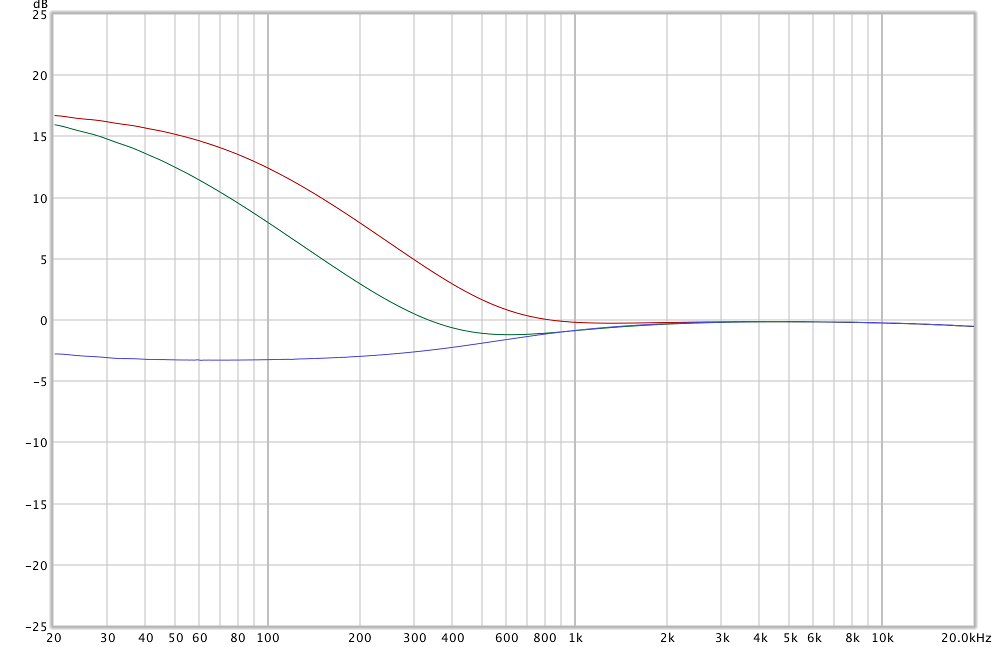
Boosting both Low frequencies while the Low Cut switch is engaged, achieving a mild version of the "pultec trick".